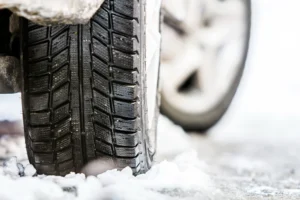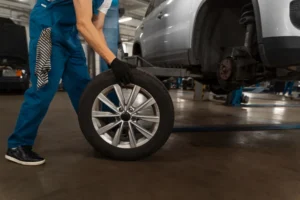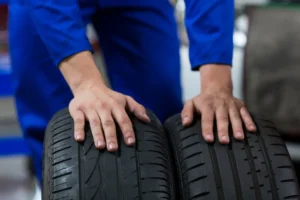Tyres don’t wear evenly. Factors such as drivetrain layout, weight distribution, and driving style cause some tyres to wear faster than others. Tyre rotation is the process of moving tyres from one position to another to even out wear and extend their lifespan. Knowing how often to rotate your tyres ensures you get the best performance, safety, and value from them.
Why Tyre Rotation Matters
Each tyre on your vehicle faces different stresses. Front tyres handle steering and most of the braking force, while rear tyres primarily support weight. On front-wheel-drive cars, the front tyres wear faster due to power delivery and steering demands. Without rotation, the front tyres will wear out much sooner, forcing early replacement.
Rotating tyres balances wear across all four, keeping tread depths even. This improves handling, braking, and ride comfort. It also helps maintain proper traction, particularly in wet or icy conditions. In the long run, tyre rotation saves money by extending overall tyre life and avoiding premature replacements.
Recommended Rotation Intervals
Most experts recommend rotating tyres every 6,000 to 8,000 miles, or roughly every 12 months, whichever comes first. However, the ideal interval depends on driving style, road conditions, and vehicle type. Drivers who cover high mileage, carry heavy loads, or drive aggressively may need more frequent rotations.
For vehicles fitted with seasonal tyres, rotation can be combined with the seasonal swap. For instance, when changing from summer to winter tyres, rotate positions before refitting them. This approach ensures wear is even across both sets.
Common Tyre Rotation Patterns
There are several rotation patterns, depending on whether your car is front-wheel drive, rear-wheel drive, or all-wheel drive:
- Front-wheel drive: Move front tyres straight to the rear, and rear tyres to the front in a cross pattern.
- Rear-wheel drive or all-wheel drive: Move rear tyres straight to the front, and front tyres to the rear in a cross pattern.
- Directional tyres: Can only be rotated front to back on the same side, as their tread pattern is designed to rotate in one direction.
Consult your vehicle manual for the recommended rotation pattern specific to your car.
Signs You Need Rotation Sooner
While mileage and time are good guides, you may need to rotate sooner if you notice:
- Uneven tread wear between front and rear tyres.
- Feathering, cupping, or bald spots on tyres.
- Changes in handling or increased road noise.
These are clear indicators that tyres are wearing unevenly and rotation is overdue.
Professional vs DIY Rotation
Some car owners rotate tyres themselves using a jack and basic tools. However, professional tyre fitters have the equipment to safely lift vehicles, check wear patterns, and rebalance wheels if necessary. Combining rotation with wheel balancing and inspection ensures tyres remain safe and effective.
Extending Tyre Life Further
Rotation is just one part of tyre care. To maximise tyre life:
- Maintain correct tyre pressures at all times.
- Check alignment regularly, especially after impacts.
- Replace tyres when tread depth nears 2-3mm, before reaching the legal minimum.
Combining these practices with regular rotation ensures consistent performance and safety.
Conclusion
Tyre rotation is an essential yet often overlooked aspect of vehicle maintenance. By rotating every 6,000 to 8,000 miles, or annually, you’ll extend tyre life, improve safety, and save money. Whether done as part of seasonal tyre changes or during routine servicing, tyre rotation keeps your vehicle handling predictably and efficiently. Regular rotation ensures you get the most from every set of tyres, mile after mile.





